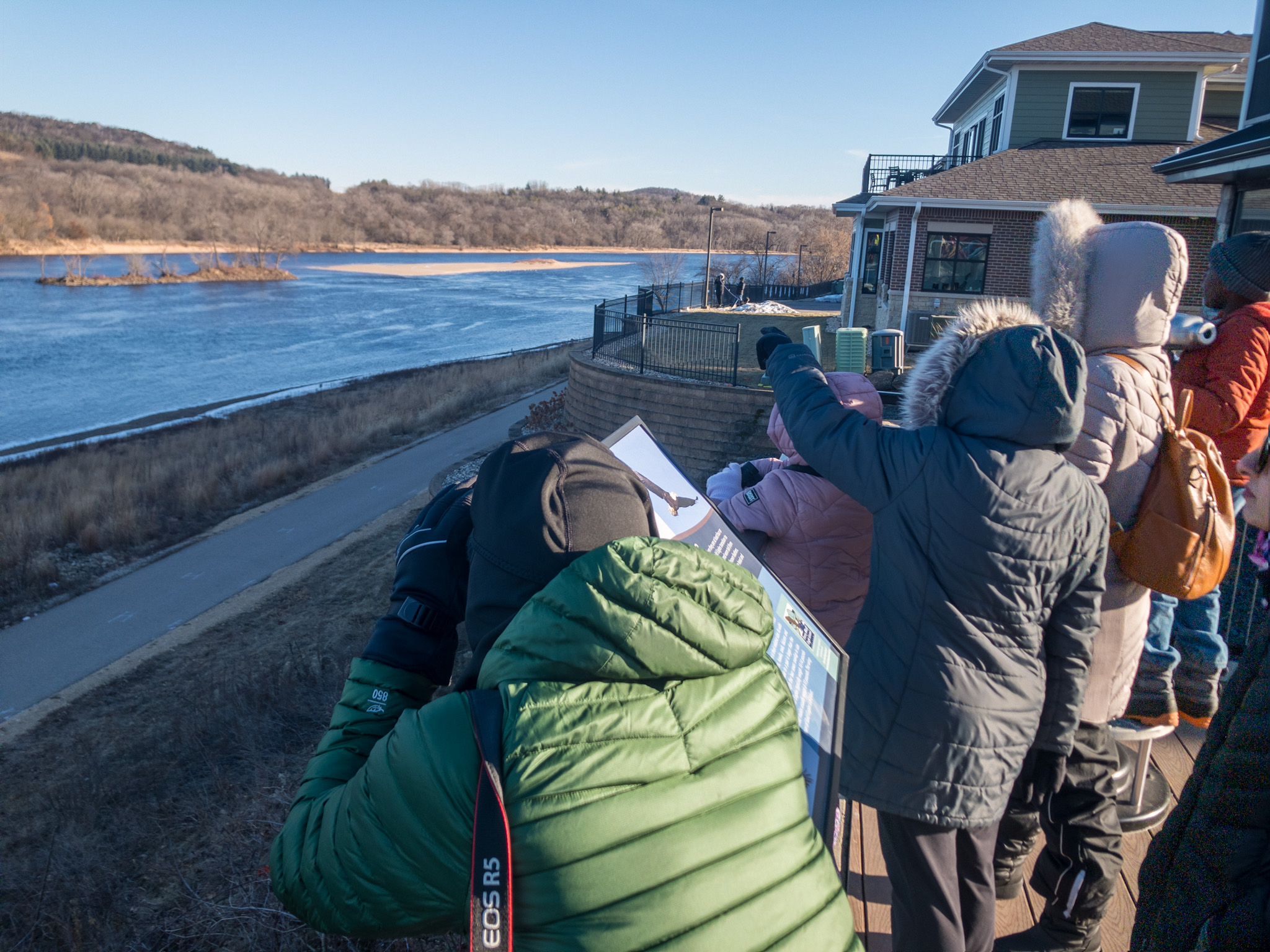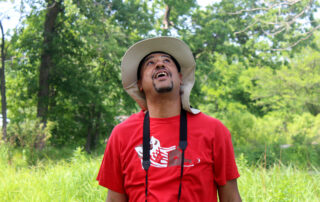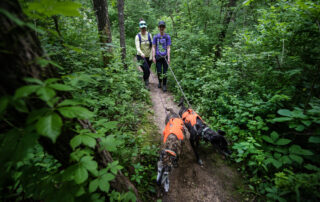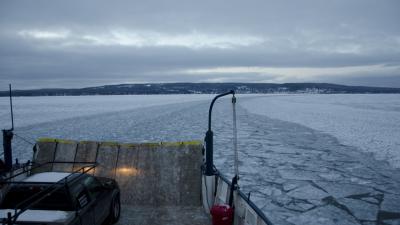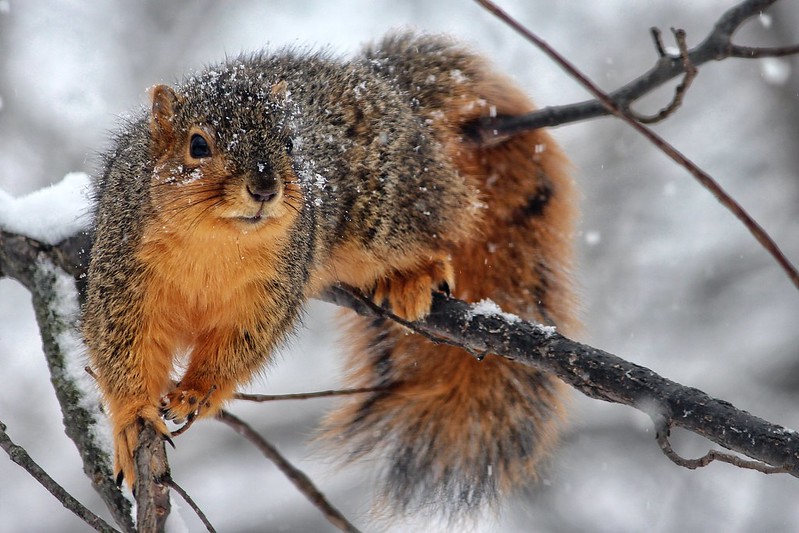People flocked to Prairie du Sac, Wisconsin in mid-January for the annual Bald Eagle Watching Days. As Christina Lieffring tells us, it was just one opportunity for people to see our national bird in the wild, one that was once dangerously close to extinction.
==
The frosty winds off the bluffs of the Wisconsin River feel extra biting on this chilly morning in Prairie de Sac. At the overlook, a small crowd with binoculars and telephoto camera lenses are braving the cold for Bald Eagle Watching Days, hosted by the Ferry Bluff Eagle Council. Mike and Connie Oemig traveled from Marshfield, Wisconsin so Connie could see the birds on her birthday.
“I absolutely love bald eagles. I just think they’re so majestic and I wanted to see them in the wild,” said Connie Oeming. “When I was growing up, it was very rare to see one and it’s wonderful that there’s more and more that you get to see in the wild. It’s just beautiful and special and this is awesome.”
Even people who grew up in areas where eagles nest have noticed them in more areas. Robin Miner of Baraboo, Wisconsin said she used to see bald eagles fairly often when she was a student at the University of Wisconsin-La Crosse decades ago.
“That was back when it was more rare to see them,” said Miner. “So it’s nice to be closer to home and be able to see such a beautiful magnificent bird in the wild — the way it should be.”
Their experiences align with what avian biologists have documented for the past 50 years. The bald eagle population in the United States was driven almost to extinction by hunting, habitat loss and the pesticide DDT. Due to the work of conservationists and a 1972 DDT ban, the bald eagle population has made an amazing recovery in Wisconsin.
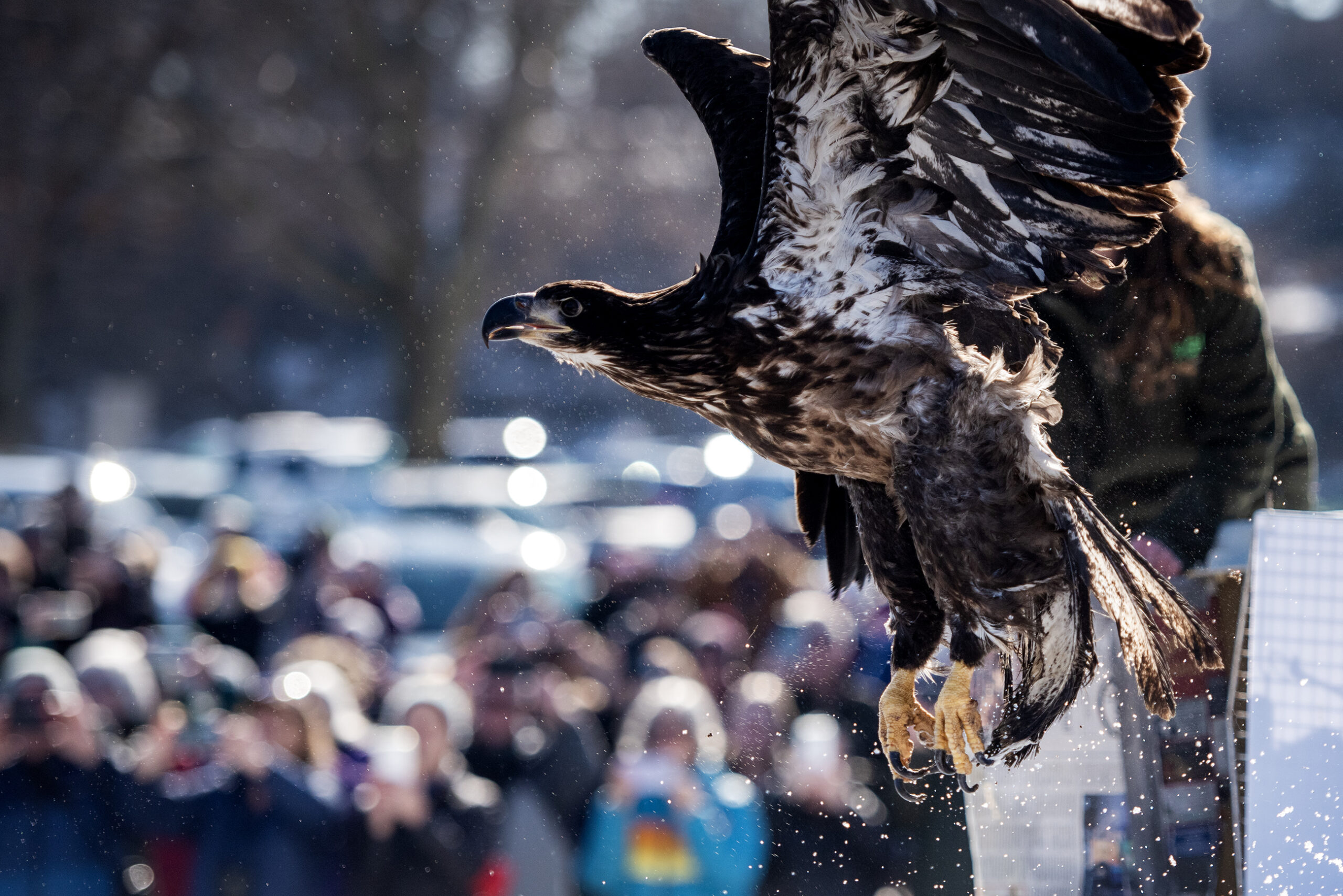
An immature bald eagle is released into the wild Wednesday, Jan. 31, 2024, in Prairie du Sac, Wis. Angela Major/WPR
“So, 50 years ago back in 1975, we had 111 pairs of bald eagles mostly in the northern tier of the counties. Today we have nearly 1,700 nesting pairs, so that’s a dramatic increase,” said Sumner Matteson, an avian ecologist with the Wisconsin Department of Natural Resources, who was at the Prairie du Sac Overlook for Bald Eagle Days. “I’ve been doing this for 39 years. Bald Eagle Watching Day is an event that celebrates the recovery of bald eagles. It’s been one of the most satisfying things for me in my career — to come out, interact with the public and see their appreciation for these birds and to see them flying.”
In 2025, Department of Natural Resources officials say they located bald eagle breeding pairs in every Wisconsin county. While the bald eagle recovery is considered a success story, their population has not fully recovered. There are parts of the state where bald eagle sightings are still rare.
Darlene Williams of Janesville had never seen a bald eagle in the wild before today’s event.
“One just went by, it’s magnificent,” said Williams. “I’m just happy that this is one of my bucket list goals and I’m happy to be able to be here today.”
Williams’ friend Miner chimed in.
“I think that’s special because I’m sure there were people who had never seen one, like Darlene. To see one is — I think it still brings you that kind of joy and excitement and that you’re seeing something special, that you know not everyone can see.”
Miner said she’s seen groups, like Raptor Education Group Inc., or REGI, release eagles that have recovered from injury back into the wild.
“That was magnificent because I’m sure there [are] people who think, ‘Why are you spending time and money to rehabilitate a wild animal?’ But I think they are special, a special species and I’m sure there [are] other species out there, too, that need the same attention. But it’s this one that has proven to work.”
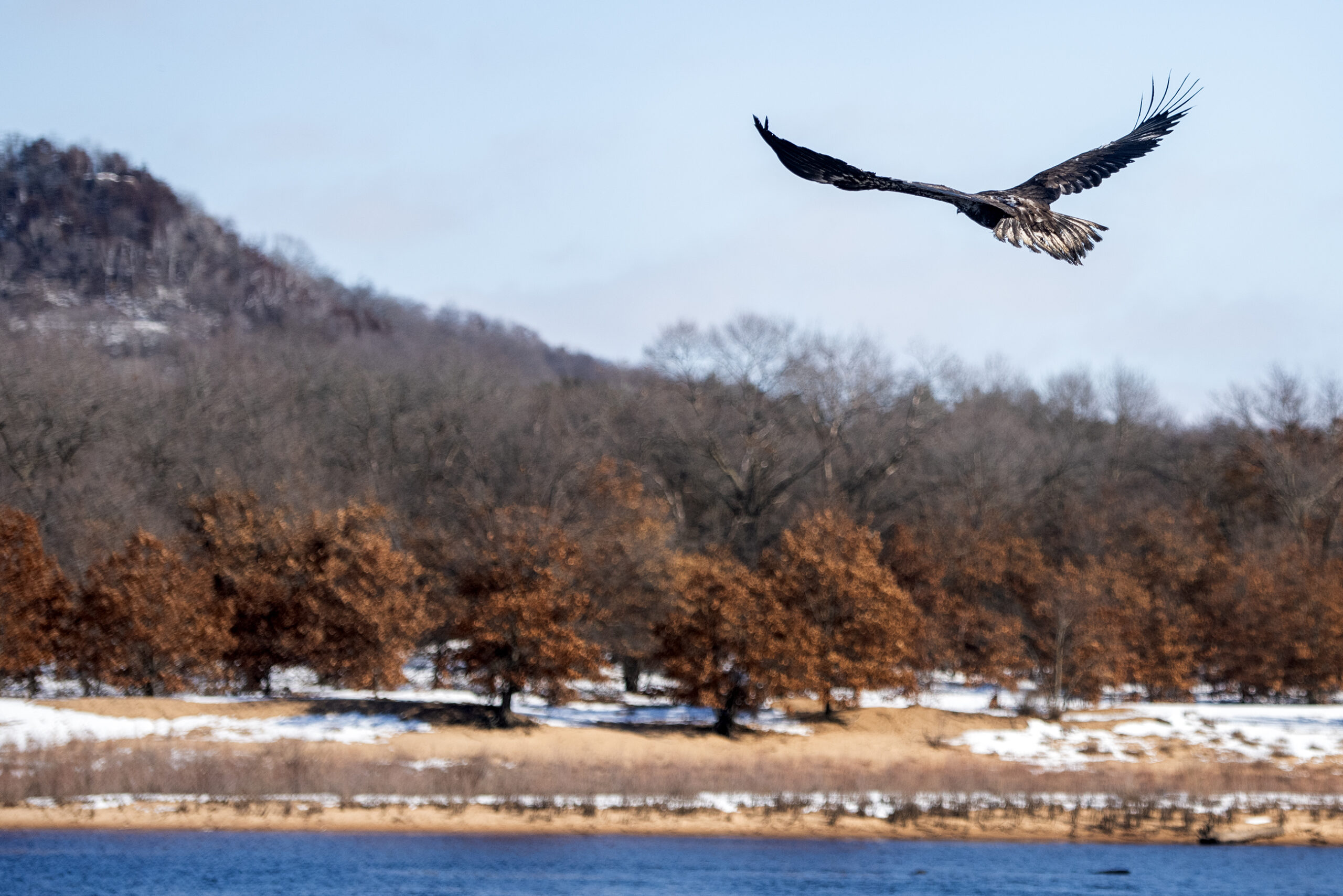
An eagle soars off into the wild after being released with four others Wednesday, Jan. 31, 2024, in Prairie du Sac, Wis. Angela Major/WPR
And there’s still more work to do.
REGI founder Marge Gibson said there are three main reasons bald eagles are brought to her rehabilitation center. They are either hit by cars, lead poisoned by lead shot or fishing lures, or poisoned from herbicides, pesticides and rodent poison in their food. Her organization comes to events to educate the public about these threats to the birds. But, Gibson said it’s important for people to see the eagles in person.
“Seeing them up close is really an important aspect of the work that we do. I think we can talk all afternoon about how amazing they are, the speed of their flight, how beautiful they are and that sort of thing. But when you see them, everything makes sense. That respect that comes with that visual contact is really important.”
As attendee Maggie Szpot pointed out, other species, like Canadian geese and sandhill cranes, were also once on the edge of extinction. Now, they’re so ubiquitous that some people consider them pests.
“That’s how it should be. We should be seeing large numbers of these animals. It shouldn’t get to the point where we have to worry about them going extinct,” said Szpot. “We have to continue to protect them to prevent something like that from ever happening again. So the fact that people are now able to see them, hopefully everywhere throughout the country, is very exciting.
Bald eagles can be seen in other parts of the contiguous U.S. To see several breeding pairs flying, fishing and nesting in the wild? For now, that’s a sight special to Wisconsin.
